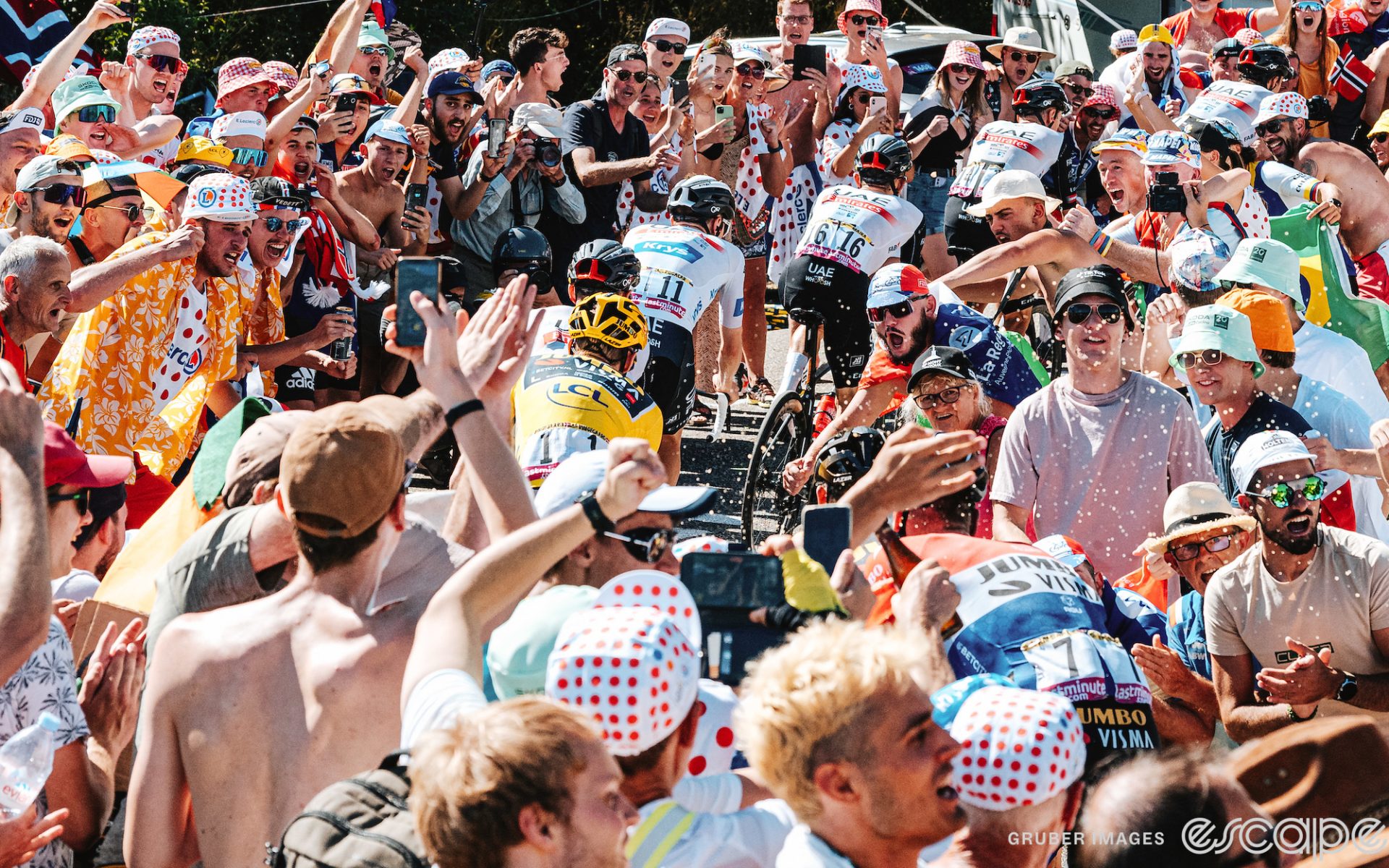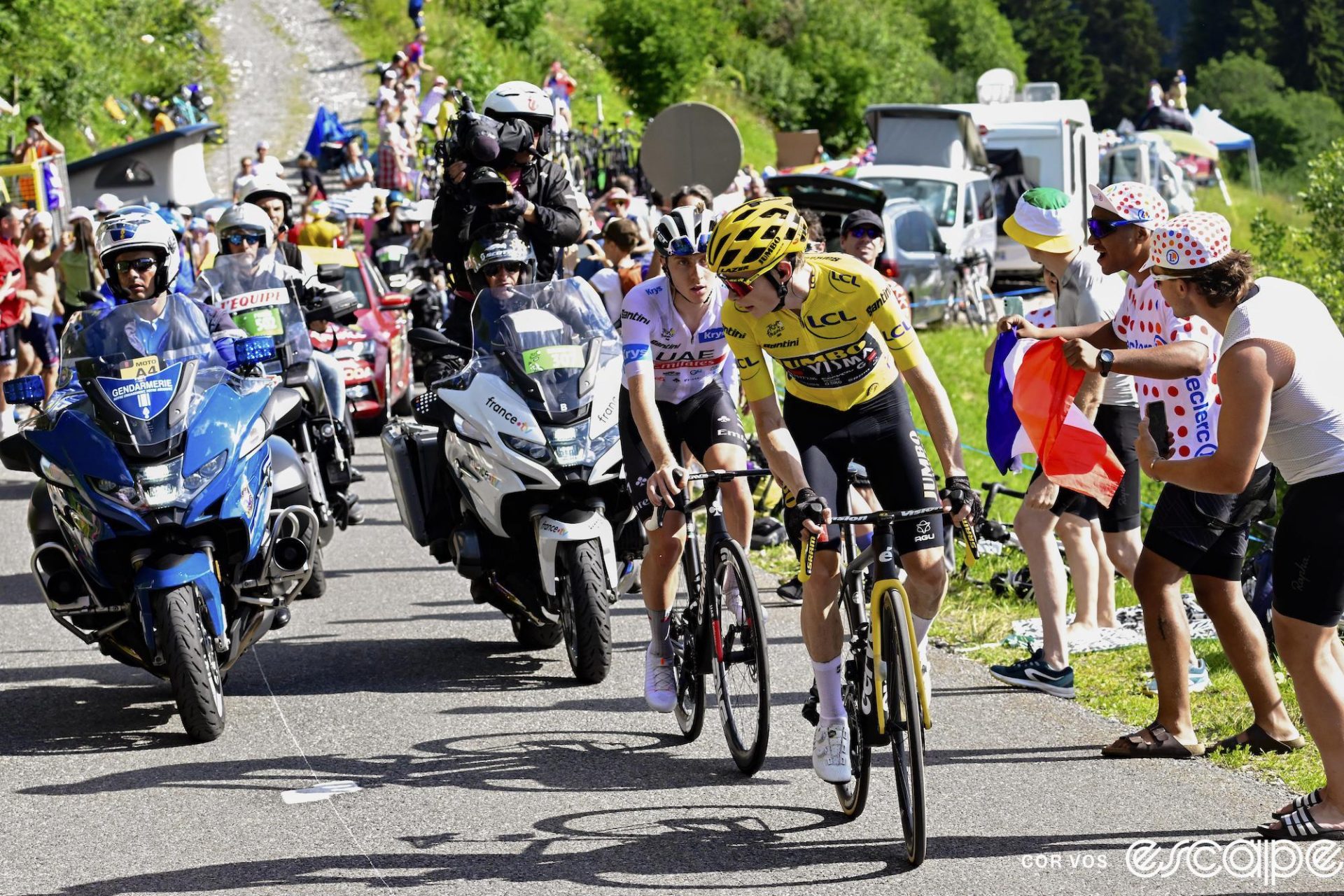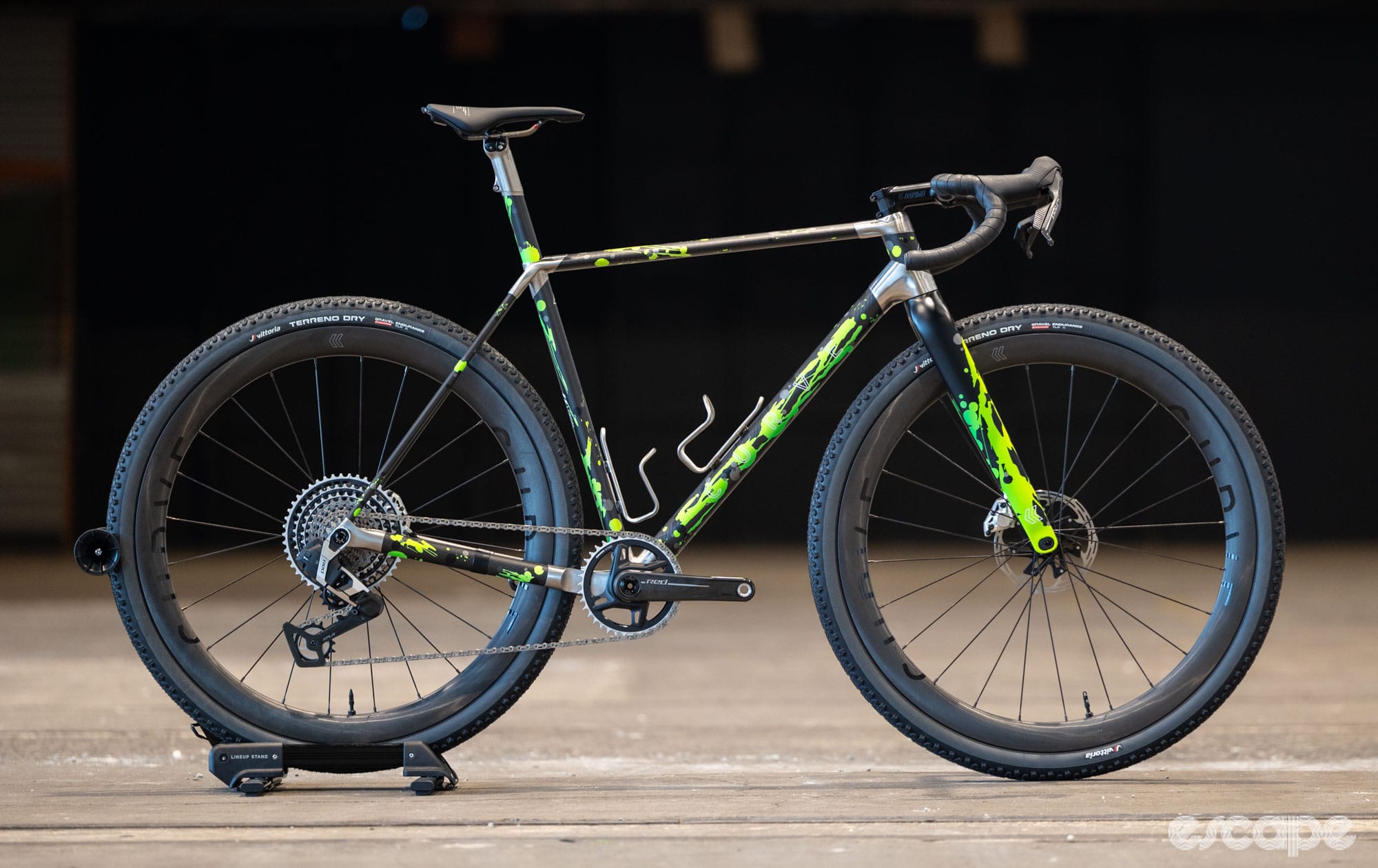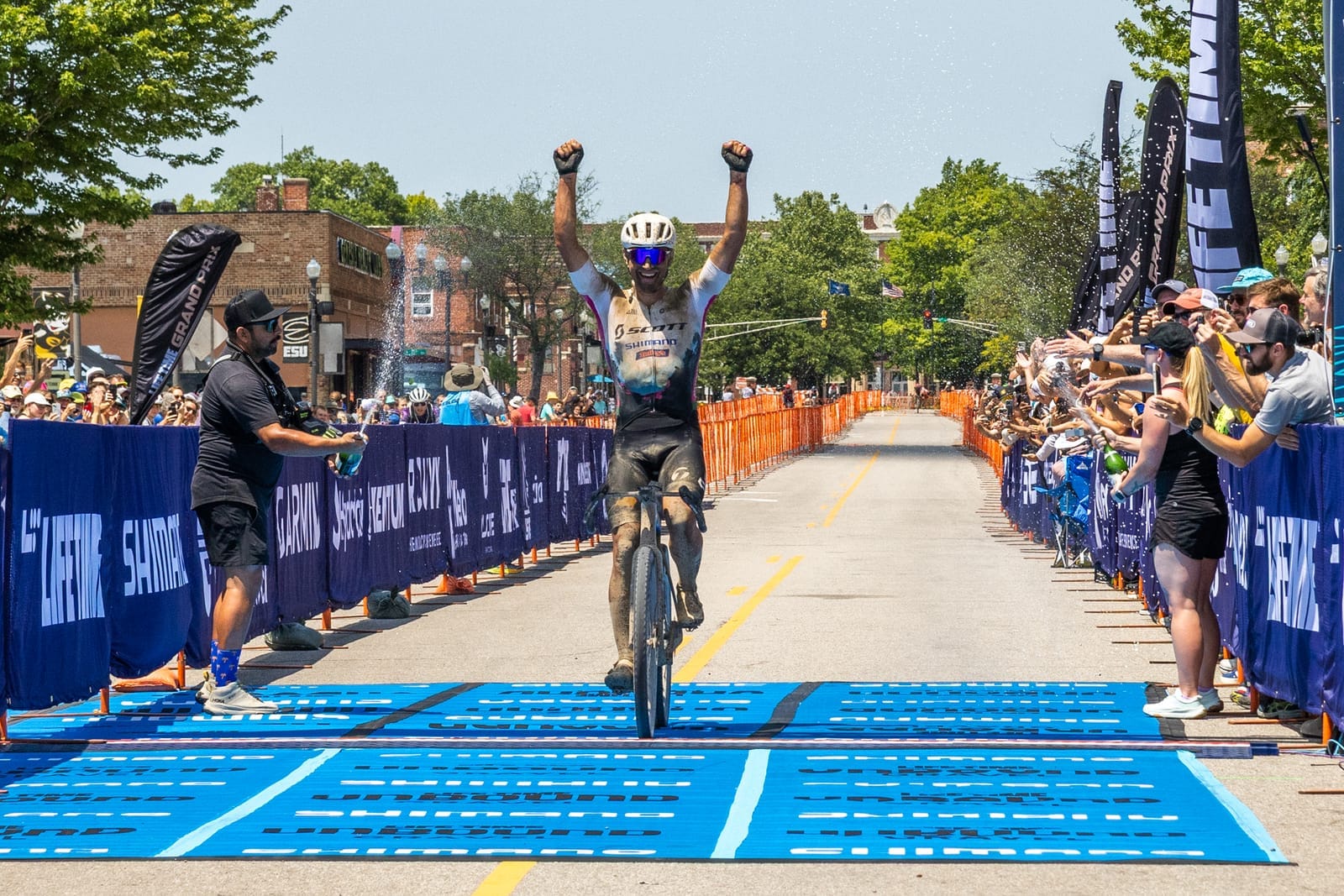Crypto Ponzi schemers FTX didn’t get shut down this hard.
Tadej Pogačar had already seen one wicked attack come to naught on the Col de Joux Plane when he launched another. With 700 meters to the summit and crucial bonus seconds on offer, the Slovenian tried to get clear of the shadow of Jonas Vingegaard again. But just a few pedal strokes after jumping, he abruptly eased off.
Were the legs missing? Nope. The problem was the playing field or, rather, what was on it. Pogačar’s progress was blocked by a pair of race motos, one French television, the other L'Équipe's photographer, two of the highest-ranking motorbikes on the race, plowing their way through a tunnel of fans pressed in close on both sides. Pogačar’s sudden attack caught them by surprise and, hemmed in, they couldn’t accelerate fast enough to stay clear of the hard-charging UAE Team Emirates captain.
Vingegaard didn’t miss the opportunity. Not long after, just as the barriers pushed the fans back slightly, he launched his own move to surprise Pogačar and go over the summit of the Joux Plane first.
If Pogačar was pissed, he did a reasonably good job of hiding it. “I wasted a bullet there after already such big climbs," he said at the finish. "To do one sprint for nothing is a bit of a shame, but I don't think it's going to change the outcome ... it is what it is." But his UAE team in general were not happy, even if they were a bit reluctant to voice their complaints.
“I don’t want to say, you know, headline stuff, but it’s actually kind of a disgrace,” said Adam Yates at the finish. “Even when me and Carlos came back we can’t even move, we’re just doing standstill behind.”
“For me, the difference there is the moto,” said UAE sports manager Joxean Matxin of the fizzled attack and Vingegaard's response.

Race motos and caravan vehicles in general are a kind of necessary evil in the sport. But in particular as crowds grow on major climbs, geometry – namely how much space everyone has to maneuver – and physics – that two vehicles can’t occupy the same space at the same time – start to become a factor.
This isn’t exactly a new phenomenon; recall the debacle of Mont Ventoux in 2016, when Richie Porte, Bauke Mollema, and Chris Froome actually plowed into the back of a slowing moto on the climb, damaging Froome’s bike and forcing him to run on foot until his team car could reach him with a spare.
The flip side of being impeded by race vehicles is getting an advantage from them, and growing understanding of the aerodynamics of drafting has shaped our views of how race vehicles affect the action.
And it wasn’t all negative for UAE. When Pogačar made his first move, at 3.7km from the summit of the Joux Plane, he opened a gap of a few seconds on Vingegaard. As the Dane grimly chased, motos hovered close in front of Pogačar, giving him a modest but unmistakable draft as he tried to press his advantage. In the end, the moto advantage/disadvantage scorecard might have been a draw.
Yates noted that part of the issue is the sheer size of the race convoy. “I don’t know why they need so many motorbikes,” he said, adding, “look at the helicopter shot and see how many motorbikes are riding next to us; we barely have any field to play with.”

But it’s less clear what to do about it. Motos and other vehicles do play a safety role in crowd control, a gentle plow that pushes back the piles of fans that invariably press in tight. Would fines and punishments work? Both offending motos were fined 500 Swiss francs each and barred from the 15th stage for their roles impeding the Joux Plane sprint, but public shaming, a one-stage ban, and fines rarely seem to have long-term effect. As it happens, the l'Equipe photographer cited today, Bernard Papon, was also in the heart of the unfortunate action on that 2016 Ventoux stage.
“It’s not the fault [only] of the motos; it’s the fault of the race,” Matxin said, adding that UCI rules are inconsistent: “It's 25 meters [behind] for the [team] cars in a time trial, so two meters in front [ for motos] is unacceptable.” (In practice, follow and lead distances are rarely monitored that tightly.) One point raised by many: if the ASO is going to put bonus seconds at the top of a major climb, maybe it needs to place more than 150 meters of barriers so the sprint can play out fairly.
The issue isn’t going to be solved by Sunday’s summit finish on Saint-Gervais Mont-Blanc. Maybe the events of today offer a temporary corrective and everyone’s on better behavior. But before long, the rhythms of the race, that very human urge by spectators and those in the convoy itself to get the best possible view of the action for themselves, their social media, or their employers, will make for a crowded course again.
About the best thing we can say about today is, if the motos did affect the racing, that it didn’t make a big difference in the standings. Ultimately, Vingegaard pulled out one second on Pogačar. They seemed closely matched on the climbs and the descents – one slightly stronger here, another there. Let’s hope that it’s the road, and the mortal engines rather than the mechanical ones, that decide the winner.
Caley Fretz and Jonny Long contributed reporting from on the ground at the Tour de France.
Did we do a good job with this story?





